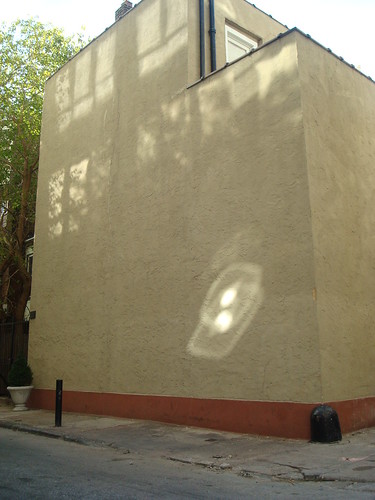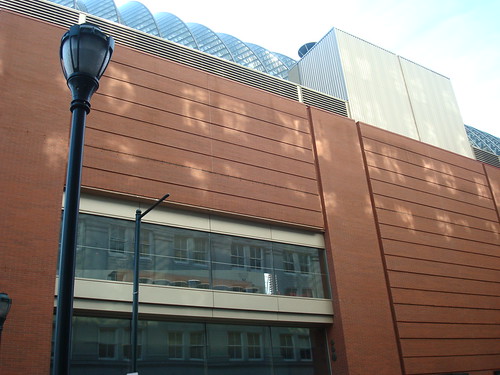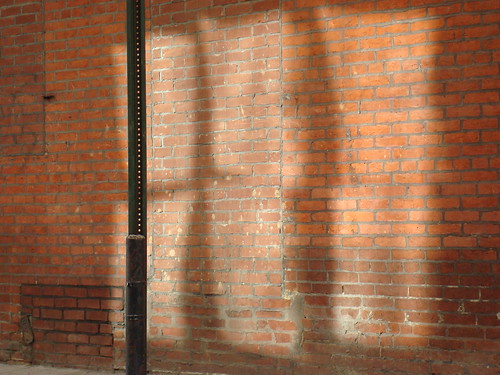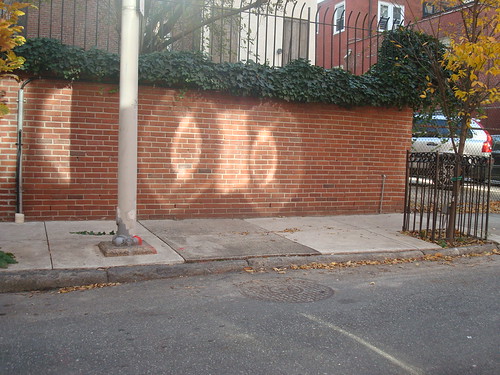
The Sun: the source of all life. I’ve been on an avid search lately for the Sixth Kingdom of Life, tracking down the species, collecting them, inspecting them, and filing them away according to my own provisional taxonomy. This newly-discovered Sixth Kingdom is the glassy and angelic set of organisms I would like to call the Photozoa…
They are a peculiar class of creatures, appearing only at certain times of the day, in certain seasons and weather conditions, for a few brief hours, and more often than not, in our urban and industrial centers. Sometimes they are in the vicinity of automobiles and other times, like vines of ivy, they slowly descend the sides of our buildings, following the passage of the Sun.
The most common species, by far, is the Mandalic. Round, semi-round, or diamond-shaped, their nucleus is formed in a four-pointed star, giving them a beautiful wheel-like design.
Secondly, there are the Blobular Photozoa. Without any recognizable structure, they can take on any number of dimensions, from a few inches to several yards in breadth, and thrive in unexpected habitats. Many times, Photozoa of a higher organization, like the Mandalic, will devolve into Blobulars as the Sun fades and the organism struggles to maintain its metabolism. A great deal of Solar energy is required for Photozoa to maintain their inner workings and organization.
Somewhat less impressive than the Mandalic is the Chromosomal species, named because of their resemblance to chromosomes, and most often coming in pairs. They may play a significant role in the reproduction of Photozoa— a minor miracle which I was lucky enough to observe in the field.
Finally, the sharp and squarish Sun’s Tooth Photozoa, which often retain a bright, homogenous white throughout their rectilinear form— much brighter than their Blobular cousins. The Sun’s Tooth Photozoan will many times assume a close, crystalline net with others of its species, in order to conserve body heat.
Reproduction happens nearer to twilight, dawn and dusk, when two indistinguishable members of the species will couple in order to create a third, their child.
I have documented numerous Photozoa of Philadelphia, with many more yet to be discovered and documented.
The Times, Places, and Species have been noted, for those who wish to observe them in person.

Pristine Mandalic specimens. Notice the rarer Blue Mandalic in the upper left.
On 19th, across from La Colombe, 8:45AM.

Mandalic Photozoa mating in the vicinity of Sun’s Tooth Photozoa above. Observe the brightness of the nuclei during coupling. The 18th Block of Manning, 9:30AM.

This array of Photozoa represent a family, perhaps moments after conception. A Mandalic cross-breeding with a Blobular, to produce the hybrid Photozoan in the middle.
The 13th Block of Naudain, 9:45AM.

An astonishing display of the Chromosomal, on the side of the Kimmel Center
On Locust , near Broad Street. 1:00PM.

White and bright example of Sun’s Tooth Photozoa.
Again on the 13th Block of Naudain, 9:45AM.

.. and a detail, demonstrating their crystalline assembly.

Species adorn neighborhood windows.
16th and Delancey, 8:40AM.

A rare Owl’s Eye configuration caused by the birth of new Photozoan (middle).
Carlisle and Pine, 1:00PM.
